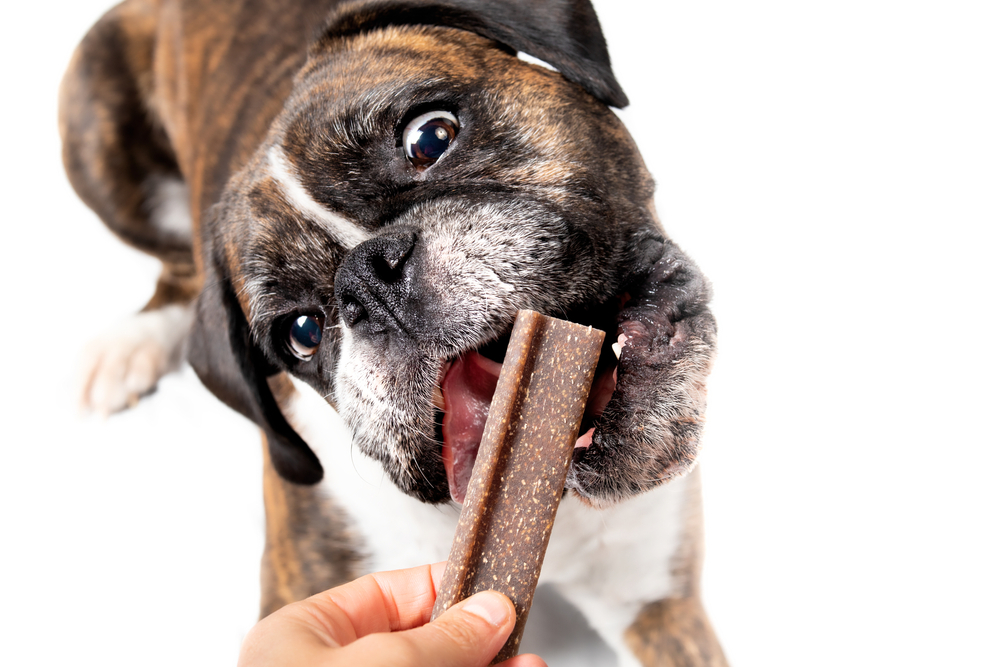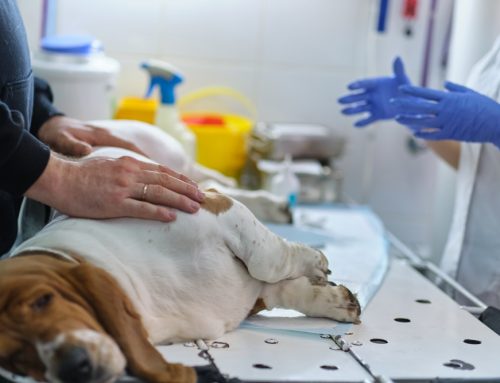Pets’ dental disease effects reach far beyond their mouths, and can potentially lead to permanent overall health issues. To help maintain your pet’s overall wellbeing, read our Memorial Villages Animal Hospital team’s oral health guidelines to learn to spot early dental disease signs in your furry pal, and ensure they receive dental treatment at the earliest stage.
Dental disease examples in pets
Barney, a 10-year-old yellow Labrador, still acts like a young pup. He also has mild separation anxiety that emerges as destructive behavior when left alone. The last time Barney’s owners went out for date night, he used his canine teeth to pry his way out of his metal kennel. After a lifetime of wear and tear, one of Barney’s weakened canine teeth snapped. The fractured tooth exposed the sensitive nerve, leaving Barney in a great deal of pain and with no appetite.
Perry, a 6-year-old red tabby cat, normally devoured any food set in front of him, chowing down until the dish was empty. Lately, however, Perry has been turning up his nose at his dry food in favor of lapping up the gravy from his canned diet. Perry’s owners believe the more appetizing wet food has spoiled him, causing the cat to refuse his boring dry food.
Zoe, a 7-month-old dachshund puppy, had a penchant for eating things she shouldn’t, including—on rare occasions—her own feces. Because of Zoe’s habit, her owner chalked up her bad breath to another poop-eating episode and didn’t give the odor another thought.
These three pets have one thing in common—significant dental disease—which many pet owners do not recognize. Owners often blame pets’ eating habit changes to their furry pal becoming spoiled, or simply attributing their pets’ bad breath to something they have eaten.
Identifying dental disease signs in your pet
By learning to spot subtle changes in your pet’s behavior and their mouth, you can identify early stage dental disease and halt the condition’s progression. To determine whether your pet has dental disease, lift their lips every week, and perform as thorough a mouth exam as they will allow. When you look in your pet’s mouth, look for these dental disease signs:
- Bad breath
- Red, inflamed, swollen, or bleeding gums
- Brown, yellow, or grey tartar accumulation on their teeth
- Excessive drooling
- Thick, viscous saliva
- Worn, loose, missing, or broken teeth
Monitor your pet’s eating habits closely, and watch for any pain indications. In addition, a pet’s behavior changes can be another dental disease indicator, and may include:
- Refusal to play with or chew on toys
- Shirking grooming
- Food bowl avoidance
- Reluctance to eat dry food or hard treats
- Chewing on one side of the mouth
- Dropping food
How dental disease affects your pet’s overall health
Caring for your furry pal’s dental health is essential for their overall health, as oral disease affects every part of your pet’s body. Pets with dental disease are at risk for developing:
- Loose teeth — As oral bacteria infiltrate the gingival sulcus (i.e., the space between the gums and teeth) these pathogens destroy the periodontal structures that hold the teeth in place.
- Tooth abscesses — The space around tooth roots may hold large amounts of pus-forming bacteria, leading to a nasty infection pocket that can cause a large swelling under your pet’s eye. In severe cases, the abscess ruptures through the skin.
- Eye issues — Pets with minimal space between their tooth roots and orbital structures can develop chronic eye infections unless your veterinarian treats the diseased teeth. This issue commonly affects pugs.
- Oronasal fistulas — As oral bacteria break down periodontal structures, tracts can form from the mouth to the nasal passages, causing chronic sneezing and nasal discharge. Some pets will sneeze food that travels through these fistulas.
- Jaw fractures — Bacteria can eat away bone, leaving the jaw weakened and susceptible to a pathologic fracture.
- Organ damage — Oral bacteria can travel throughout your pet’s bloodstream, attacking their vital organs, resulting in heart disease, chronic kidney failure, or liver disease.
How to prevent dental disease in your pet

To help keep your pet happy, healthy, and pain-free, stay on top of their dental care. Schedule regular professional dental cleanings annually or more frequently if your pet needs them, and provide your furry pal with daily oral health care. To slow your pet’s plaque and tartar accumulation at home, use a combination of the following approved dental health products:
- Small soft-bristled toothbrush or finger brush
- Pet-friendly toothpaste without fluoride
- Dental chews
- Dental treats
- Prescription diets for dental health
- Oral sprays, rinses, and wipes
- Food and water additives
Plaque begins forming on your pet’s teeth within 24 hours after a meal. To help prevent them from developing oral bacteria buildup, brush your pet’s teeth daily and give your furry pal appropriate dental chews, treats, and other products.
Your pet’s regular at-home dental care is important to helping maintain their oral health and overall wellbeing. However, your pet’s professional dental cleanings are essential, as they are the only treatment that can effectively remove plaque and tartar from below the gumline, and enable your veterinarian to detect dental disease. Schedule your furry pal’s next dental cleaning with our Memorial Villages Animal Hospital team.








Leave A Comment